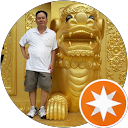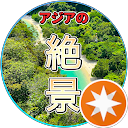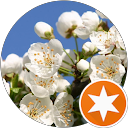Khleang Pagoda (Wat Kleang): A Timeless Icon of Khmer Heritage in Sóc Trăng
Wat Kleang (Chùa Khleang) stands as one of the oldest and most significant Khmer pagodas in the Mekong Delta, serving not only as a place of worship but as a vibrant hub for ethnic Khmer culture and community in Sóc Trăng. Its enduring beauty and rich history make it an essential stop for any traveler seeking to understand the region’s diverse heritage.
Address: 53 Tôn Đức Thắng, Phường 6, Sóc Trăng, Vietnam.
I. History and Cultural Importance
The pagoda boasts a history stretching back nearly 500 years. It was initially built in 1532, making it one of Sóc Trăng’s most ancient temples.
The Name’s Meaning: The name “Khleang” in the Khmer language translates to “rice storage.” This hints at the pagoda’s historical role as a communal center, where the community stored rice and other goods, reflecting its importance beyond spiritual life.
National Heritage: Vietnam’s Ministry of Culture and Information recognized the temple as a National Architectural and Artistic Monument on April 27, 1990, officially preserving its historical value.
Education Center: The pagoda hosts the local Pali Secondary School, where young monks and local children study the Khmer language and Buddhist scriptures for free, solidifying its role as a cultural and educational pillar.

II. Architecture and Artistic Details
Wat Kleang embodies the classical architecture of Theravada Buddhist temples in the region, characterized by intricate detail and colorful elements.
The Main Hall (Chánh Điện): The elevated Main Hall dominates the complex, sitting on a high three-tiered platform. Its roof features three layers, with the center layer being larger than the two side layers, creating a visually striking silhouette. Visitors observe the roof edges decorated with gracefully winding Naga (mythical serpent) statues.
Protective Deities: Look for the surrounding columns and walls. They feature statues of the Krud (or Garuda), a mythical bird-man figure used to support the roof eaves and symbolize strength and protection. Statues of the Ken Naarr dancer also adorn the pillars, welcoming guests to the holy site.
Interior Art: Inside the hall, you find a large Shakyamuni Buddha statue. Vibrant murals cover the walls, telling the story of the Buddha’s life, from his birth to his attainment of Nirvana. The design emphasizes the principles of Theravada Buddhism.

III. Visitor Essentials and Cultural Experience
Khleang Pagoda remains an active religious site and a peaceful retreat. Visitors should plan for a rich cultural visit.
Entrance Fee (Giá vé): Admission to the pagoda is generally free of charge, consistent with the tradition of Buddhist temples. Guests may offer voluntary donations (tiền công đức) to help maintain the temple grounds.
Operating Hours (Giờ mở cửa): The temple is typically open daily from 7:00 AM to 6:00 PM. The best time to visit is in the early morning or late afternoon when the atmosphere is most serene.
Cultural Events: Plan your visit around major festivals, such as Chol Chnam Thmay (Khmer New Year) or Ok Om Bok (Moon Festival), to witness the vibrant local culture and traditional rituals.
Etiquette: Visitors must wear appropriate clothing that covers the shoulders and knees. Always maintain a quiet, respectful demeanor while on the temple grounds.




